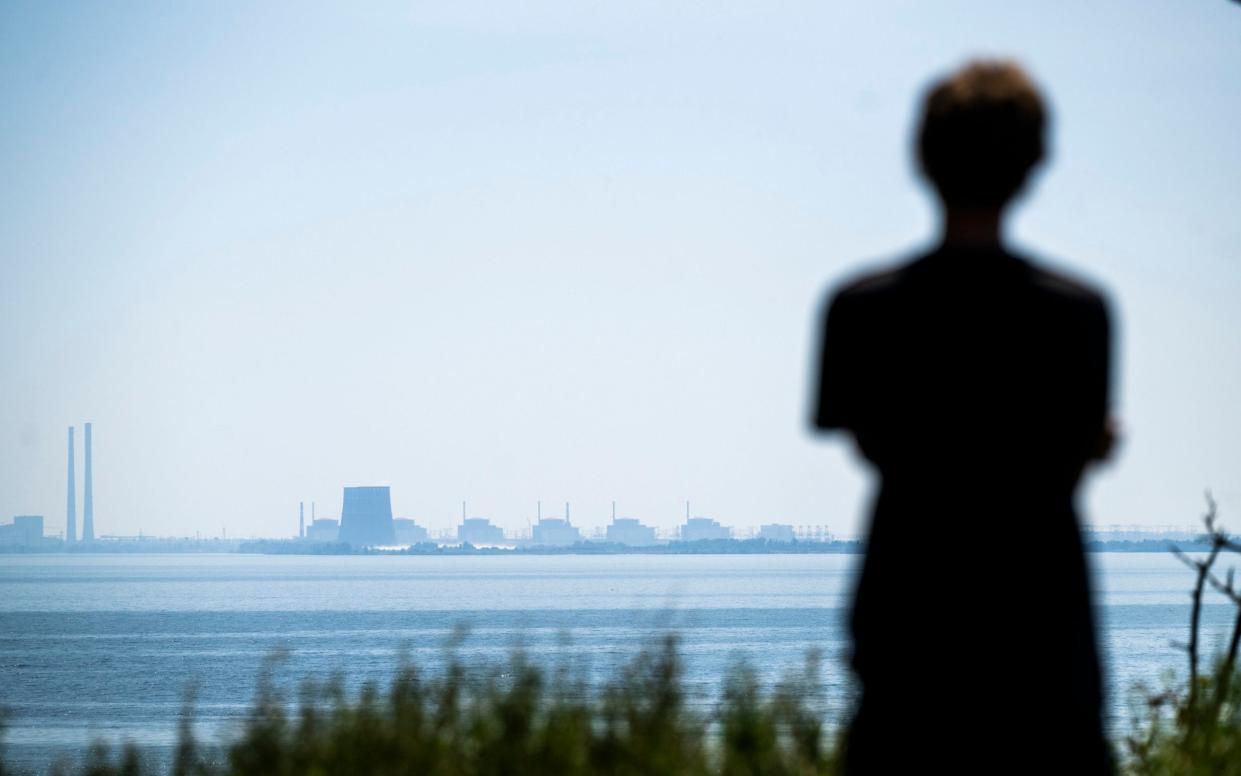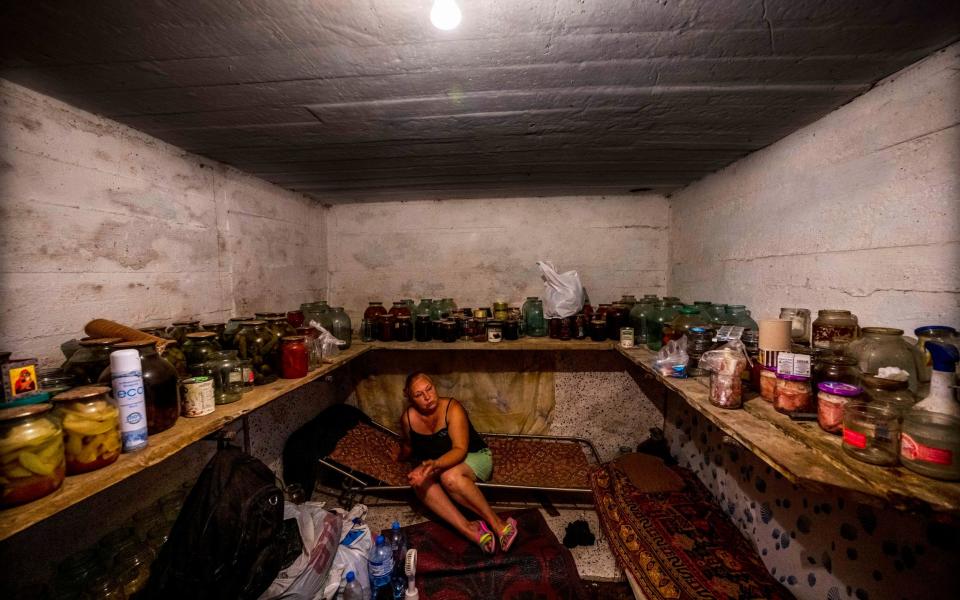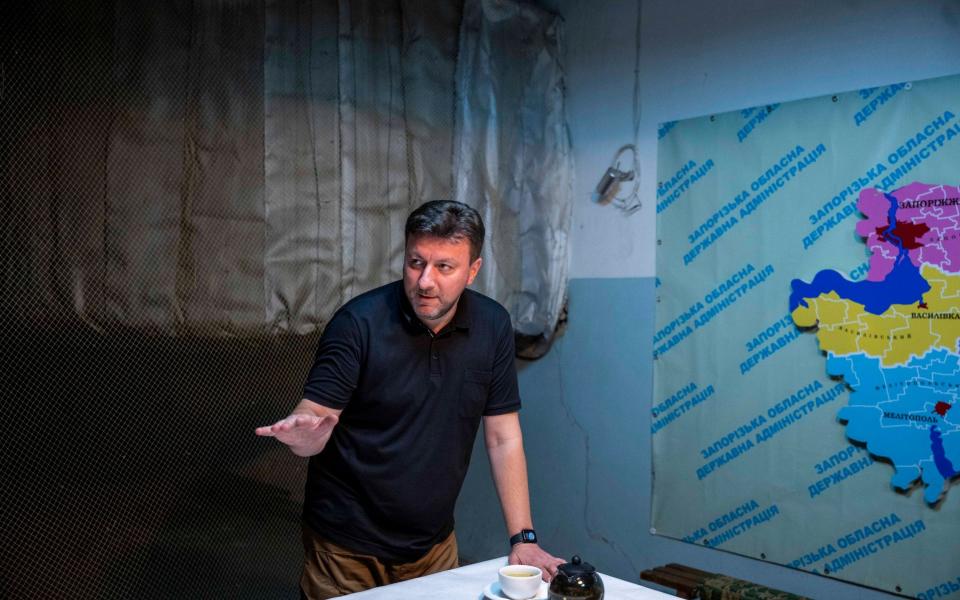Nuclear disaster fears: ‘It won’t be another Chernobyl, it will be worse’

Plumes of smoke on Thursday rose over the Zaporizhzhia nuclear plant, a low-slung grey complex on the banks of the river Dnipro.
For the Ukrainian citizens on the other side of the river – and the world watching on social media – the smoke provoked a fresh shiver of fear: was it a shell? Fire? Something worse?
Having occupied the plant since early March, Russian forces have begun shelling Ukrainian towns in the surrounding area from behind its “nuclear shield”.
The plant, which can power four million homes, still has two of its four nuclear reactors working. If Ukraine is to progress far in its counter-offensive to retake the south, it must either be bypassed, surrounded or recaptured.
Several times in the past 10 days reports have emerged of the plant being shelled. Moscow accuses Ukraine; Kyiv counters that Russian munitions are to blame, part of an effort to destroy Ukrainian infrastructure.
Establish a demilitarised zone
On Thursday, Ukrainian authorities said five Russian shells struck the site next to an area where radiation sources are stored. No one was hurt and staff managed to contain the fire, according to Energoatom, Ukraine’s nuclear regulator.
The US State Department on Thursday said the United States supported calls by the UN and others to establish a demilitarised zone around the plant.
“We continue to call on Russia to cease all military operations at or near Ukrainian nuclear facilities and return full control to Ukraine, and support Ukrainian calls for a demilitarised zone around the nuclear power plant,” said a state department spokesman.
Whoever is responsible for the shelling, locals in the small city of Nikopol near the plant say that Russia’s “suicidal” use of the plant as a base is to blame.

Olena Kravchuk, 51, lives around six kilometres (3.7 miles) away. She will not leave the home that she built with her husband, nor the garden she tends to every day, despite the regular hum of air raid sirens.
“I am worried and scared that nuclear war could happen,” she told The Telegraph as more sirens blasted.
“If something bad happens at the nuclear station it doesn’t just affect us here, but the whole of Ukraine and Europe. We don’t want to leave, but if there is an explosion at the plant then we will have no choice but to evacuate because the authorities will make us.”
For Oleksandr Sayuk, the Mayor of Nikopol, it is too early to tell people to leave their homes.
“Everyone should make this decision by themselves, we won’t tell people to evacuate,” Mr Sayuk said. “We live day-to-day here and if we see the next morning it’s good.”

Ukrainian technicians tortured
Since capturing the plant, Russian soldiers have forced Ukrainian technicians to continue to work at the site under Moscow-installed management.
Some have been tortured with electrical shocks, suspected of supplying information to the Ukrainian military. Others have been kidnapped and ransomed back to their families by soldiers hungry for cash.
In his overnight address late on Sunday, Volodymyr Zelensky, the Ukrainian president, said: “There is no such nation in the world that can feel safe when a terrorist state fires at a nuclear plant.”
Nevertheless, Ukraine has targeted the plant with highly precise munitions. Military intelligence reported that a kamikaze drone took out a Russian Grad-rocket launcher on July 22 – just 150 yards from a nuclear reactor.
Western intelligence has briefed that the plant is robust, with the reactors protected by concrete that can withstand a terror attack or plane-crash.
Like Mr Zelensky, Oleksandr Starukh, head of the military administration of the Zaporizhzhia region, organised by the Transatlantic Dialogue Centre, dismissed the idea that Ukraine would shell a nuclear plant.

“It would be suicide for us,” he told The Telegraph from an underground bunker after more air sirens sounded in the city of Zaporizhzhia.
“It makes no sense to shell the station, 40,000 people are in the occupied city of Enerhodar and then 200,000 people in the surrounding occupied areas. This is a really big nuclear bomb site and all of that is at risk.”
‘They are already playing with fire’
He warned that, during fighting, rockets could hit the plant “by mistake” and that the Russians had already succeeded in striking the site before.
“In March they destroyed the control centre of the station,” Mr Starukh added. “They are already playing with fire.”
He added: “Before the invasion, we didn’t have any soldiers and weapons in the station, only the National Guard. But the Russians broke all the rules of the international convention of how to behave in war.”
Asked if he was concerned that an explosion at the site could result in another Chernobyl, Mr Starukh said: “It won’t be another Chernobyl because this station is even bigger. It will be even worse.”
The only way to “get them [the Russians] out” of the plant was with more long-distance weapons from the West, he said.
In the nearby town of Stepnohirsk, the threat of a potential nuclear calamity weighs on everyone’s mind. Of the 5,000 people who used to live here, only 1,500 remain. Dogs and cats roam the streets, which are regularly bombarded with Russian artillery.
In a block of flats close to where a kindergarten was shelled five days ago, Olga Shatokhina, 56, explained how frightened the residents were. “We are worried that we are so close to the station but at the same time, we don’t have a choice to leave,” she said.
“People ask me why aren’t I leaving, but where can I go?”

